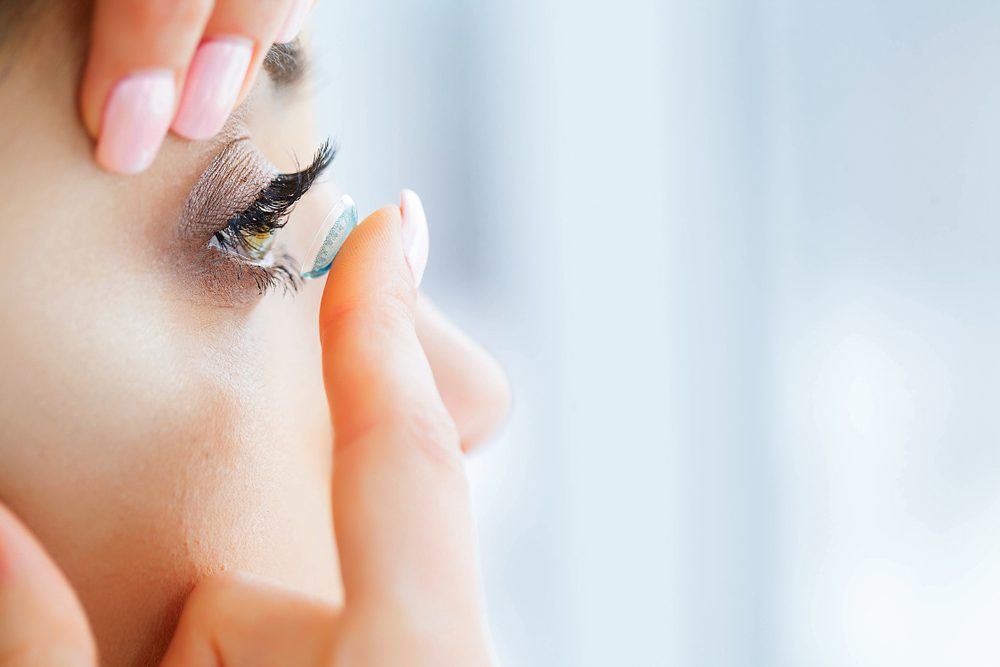Vision impairments and eye disorders are not something of the past. Instead, individuals around the country live each day with these common eye problems. Understanding vision improvement methods is highly recommended as glasses, contacts, and corrective surgeries can improve eyesight and prevent vision loss. Before exploring a few of today’s most popular vision improvement methods, we encourage you to review a few statistics provided by the CDC:
- Over 40 million U.S. citizens aged 40 years plus have eye disorders; 1 million are blind.
- 6.8% of U.S. children below 18 years have eye issues; 3% are visually impaired.
- $ 140 billion is spent annually on vision-related medical bills.
Popular Vision Improvement Methods
People of every age can experience issues with their vision. However, due to the natural aging process, older individuals have an increased chance of developing vision problems for various reasons. Preventative measures can be taken to slow the development of eyesight problems, such as:
- Observing the 20-20-20 rule: The 20-20-20 rule is an exercise to help mitigate the effects of digital devices on your eyes. The rule states you should look at an object 20 feet away for 20 seconds after every 20 minutes of working on a device.
- Eating a balanced diet: A balanced diet is essential for the development of the eyes. Eat plenty of carrots rich in vitamin A, eggs, and dietary minerals.
- Getting enough sleep: Sleep seems to be the ultimate cure for all ailments. When you sleep, your eye muscles relax, lubricate, and after several hours, become renewed.
- Exercising regularly: Exercising for around 20 minutes per day improves blood circulation and benefits small blood vessels in the eyes. Improved blood circulation keeps your eyes healthy by transporting oxygen and nutrients, and removing respiratory waste products.
- Avoiding smoking: Smoking tobacco increases your chances of developing glaucoma, AMD, and diabetic retinopathy by three to four times. Reducing or quitting smoking will help reduce eye problems.
Medical Vision Improvement Methods
Medical visual improvement methods are clinical approaches that aim at alleviating eye problems, and can be surgical or non-surgical. Let’s read on to get familiar with a few of the most popular.
#1. Astigmatic Keratotomy
Astigmatic keratotomy is a cutting-edge solution for people with astigmatism. Astigmatism is a visual impairment resulting from the imperfection of the eye cornea or lens. It causes blurred vision, headaches, and eye discomfort. Doctors recommend astigmatic keratotomy to correct the imperfect lens or cornea. The surgery involves the use of lasers to make one or two incisions at the steepest part of the cornea, causing the muscle to relax and take a uniform curvature. Typical candidates for this procedure have mild symptoms, but if the disease is well-developed, patients will be advised to continue wearing corrective eyewear after a successful operation.
#2. Refractive Lens Exchange
This surgery removes a clouded or deformed eye lens, and replaces it with an artificial one. Refractive lens exchange is usually performed on older patients who wish to stop wearing corrective eyewear. If you are near or far-sighted, you are also a candidate for refractive lens exchange. However, refractive lens exchange is more invasive, and can take longer to heal.
#3. LASIK
LASIK is an evolving method that corrects vision by changing the shape of the cornea in individuals with non-uniform corneas that poorly refract light to the retina. If you have myopia, hyperopia, or astigmatism, you could stop wearing corrective eyewear if you are a qualified candidate. However, LASIK can result in under or overcorrection of the issue, vision loss, and dry eye.
#4. Corneal Refractive Therapy
Individuals with myopia can partially correct the problem with cornea refractive therapy. The method involves placing a rigid oxygen permeable contact lens in the eye to reshape the cornea during sleep. After successful therapy, you may go up to 72 hours without glasses, and experience optimum vision after 14 days of initiating therapy. You are not a proper candidate if you have eye inflammation, infection, injuries, or severe allergic reactions.
Urgent Eye Care Services
Urgent eye care services alleviate sudden pain or loss of vision stemming from a variety of causes. The service is available to all ages, and you don’t need a referral. Symptoms that can be treated with urgent eye care include:
- Swollen or irritated eyelids
- Sudden loss of vision
- Foreign object in the eyes
- Eye redness
If you have recurring eye conditions such as glaucoma or cataracts, it is advisable to visit your eye care professional if any of the symptoms above begin.
Do Vision Improvement Methods Actually Work?
Yes, they do. Home remedies such as eating a balanced diet, exercising, and observing the 20-20-20 rule may not be the ultimate solutions to eye problems, but they accelerate the healing process after LASIK, astigmatic keratotomy, and cornea refractive therapy. By working with an experienced eye doctor, it’s likely that the selected method of vision improvement will help.
Request an Appointment for Top-Quality Eye Care Services
Properly caring for the health of our eyes and optimal vision is vital as the eyes play a substantial role in everyday life. Whether you’re near or far-sighted, want to find an alternative to corrective eyewear, or generally want to invest in the health of your eyes, the first step is finding an experienced eye doctor. The remarkable doctors at Art of Optiks are here to guide you in your eye care journey, from comprehensive eye exams and urgent care services to contact lens fittings and more. Contact us today to schedule your appointment.


